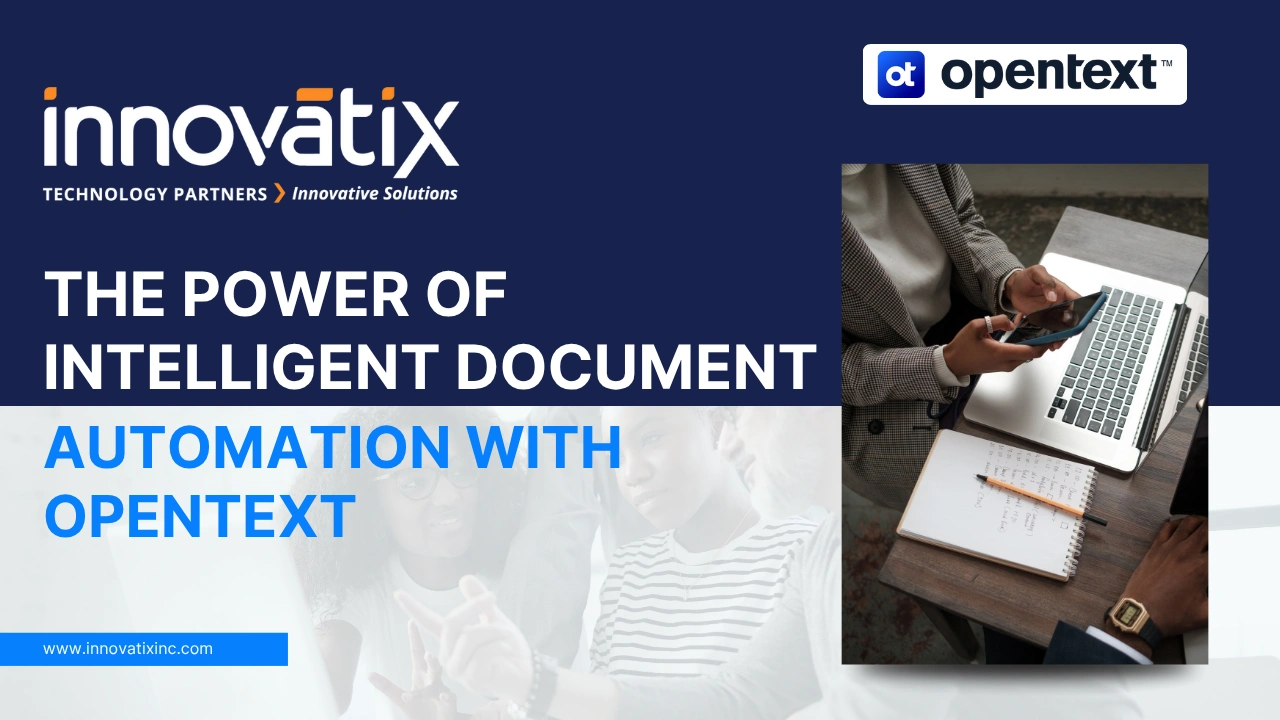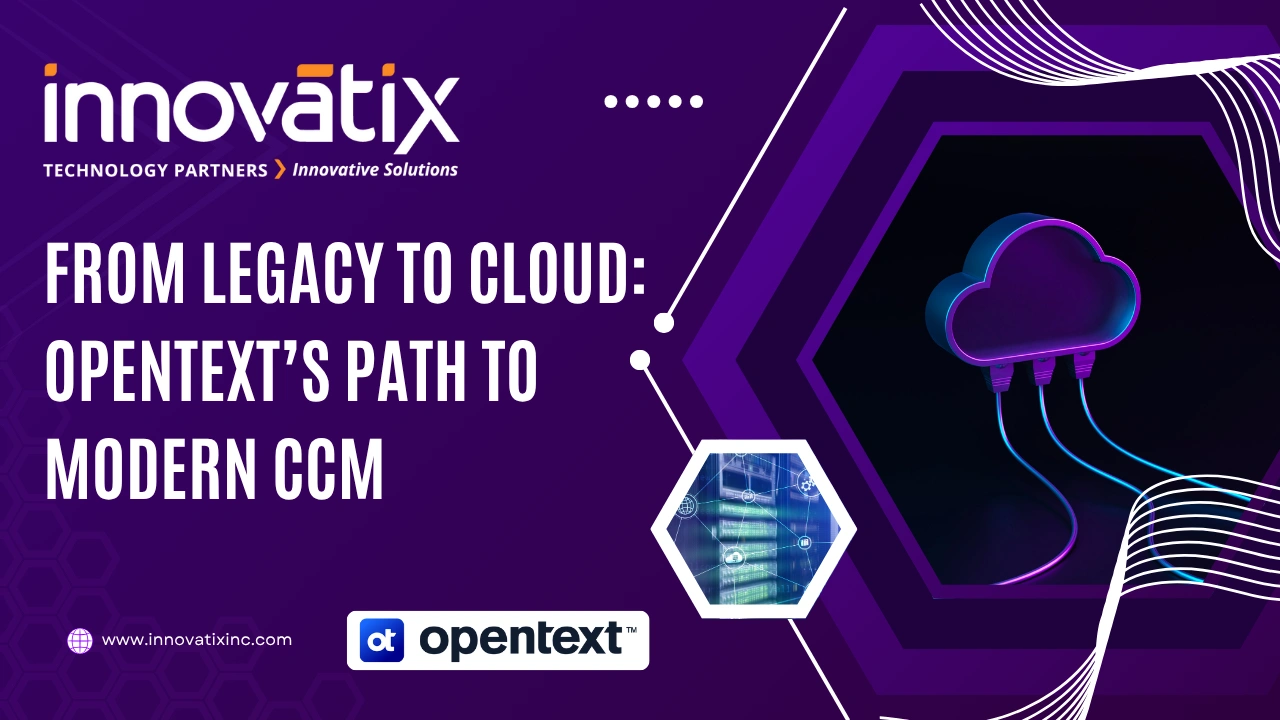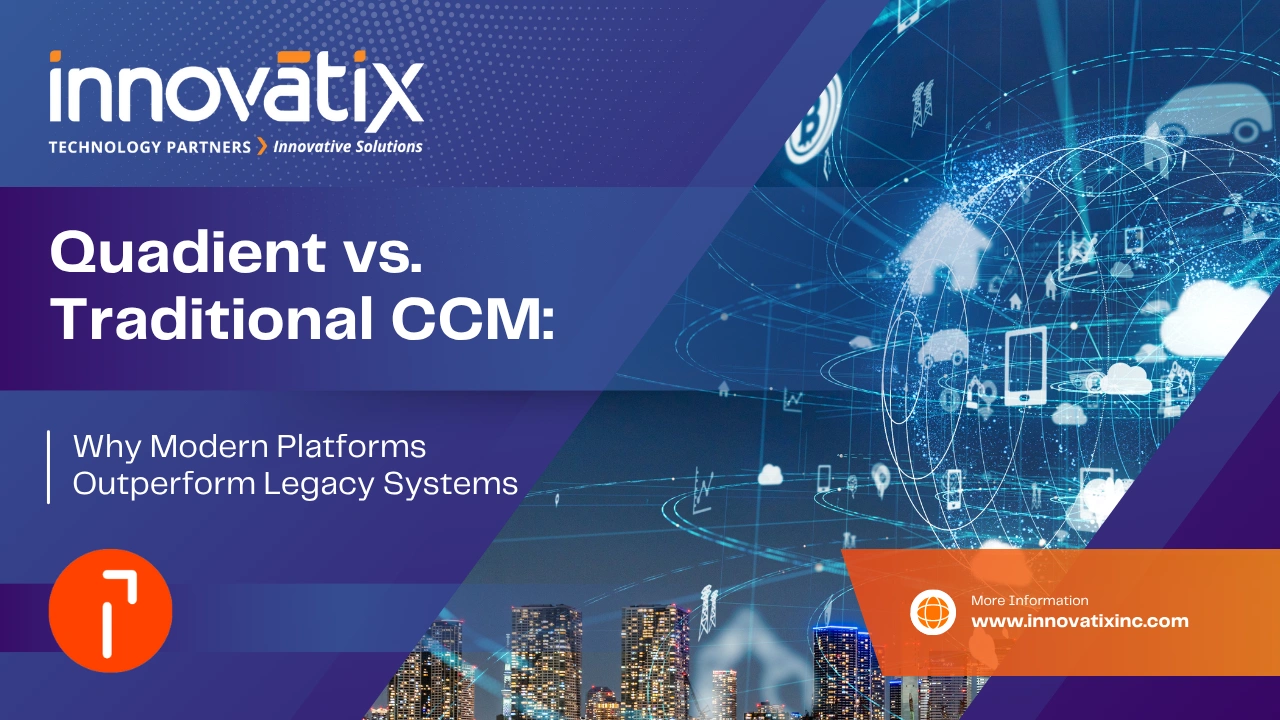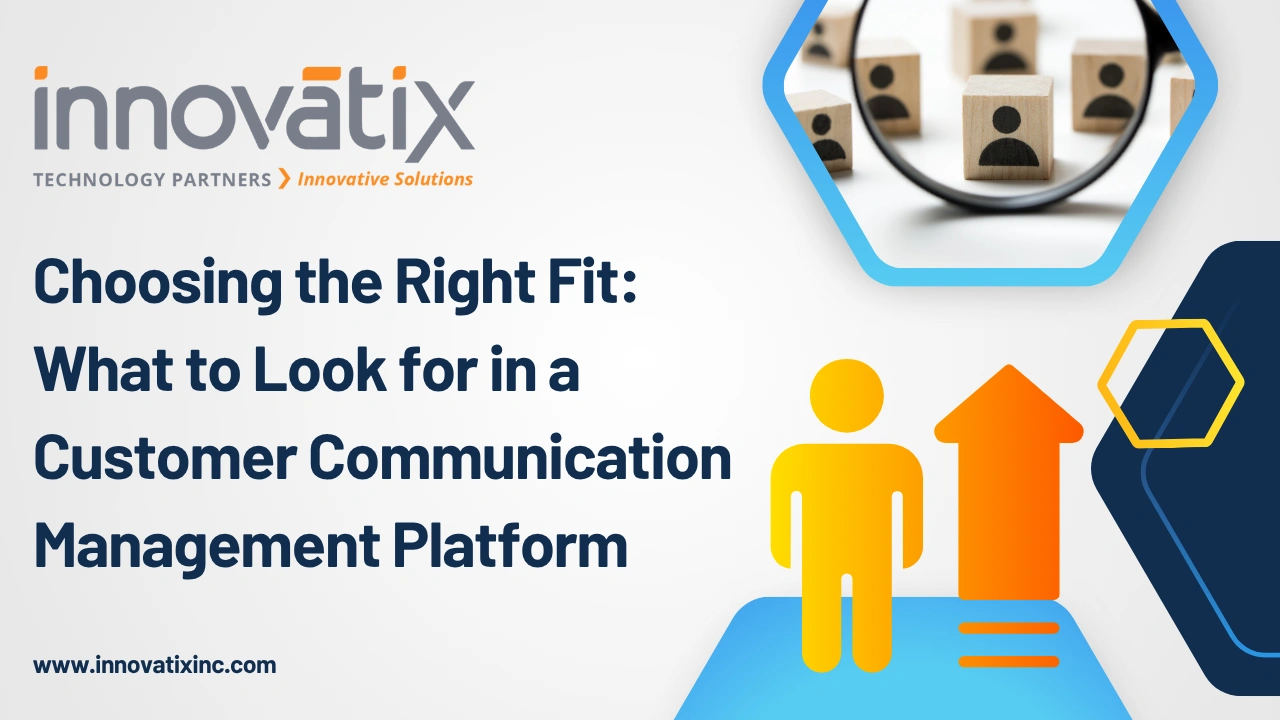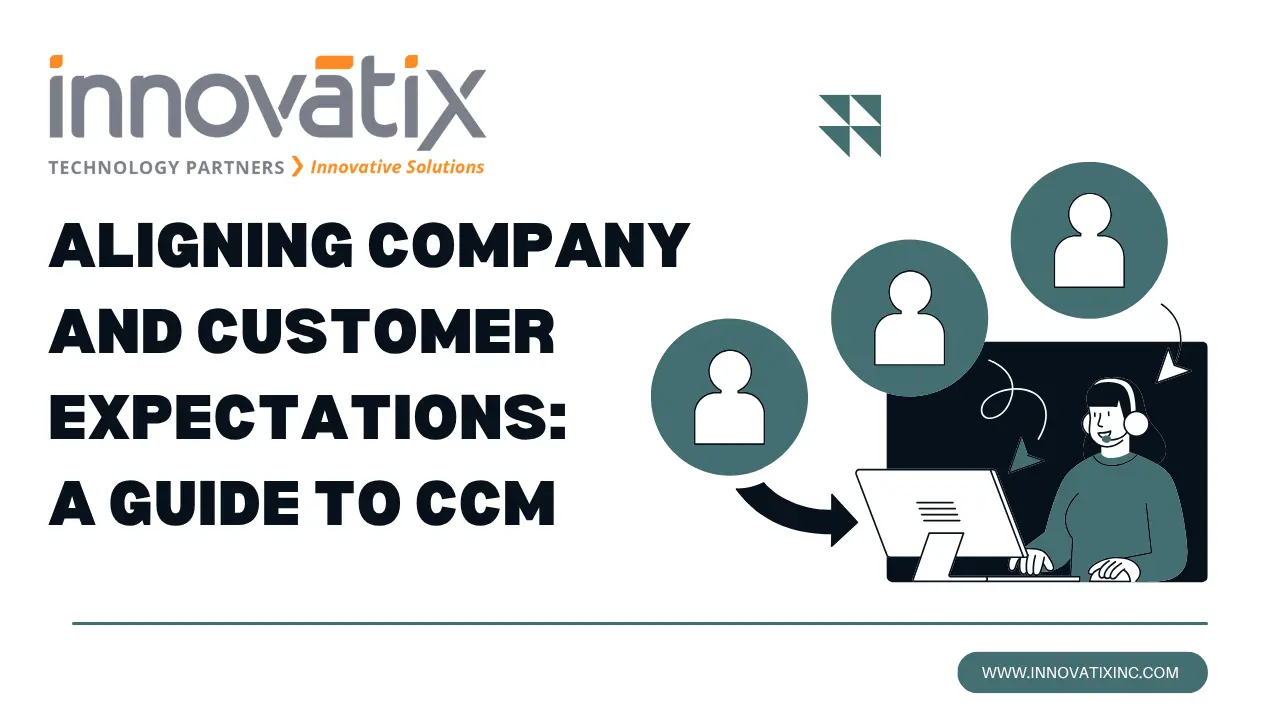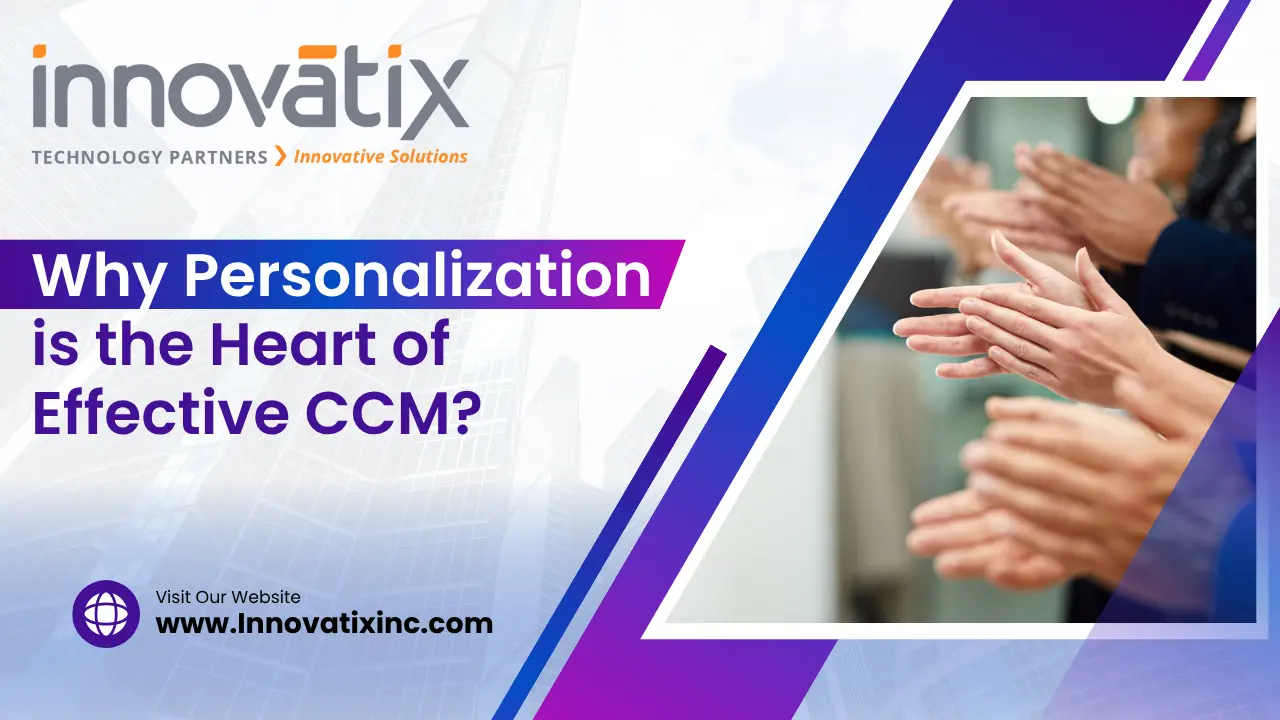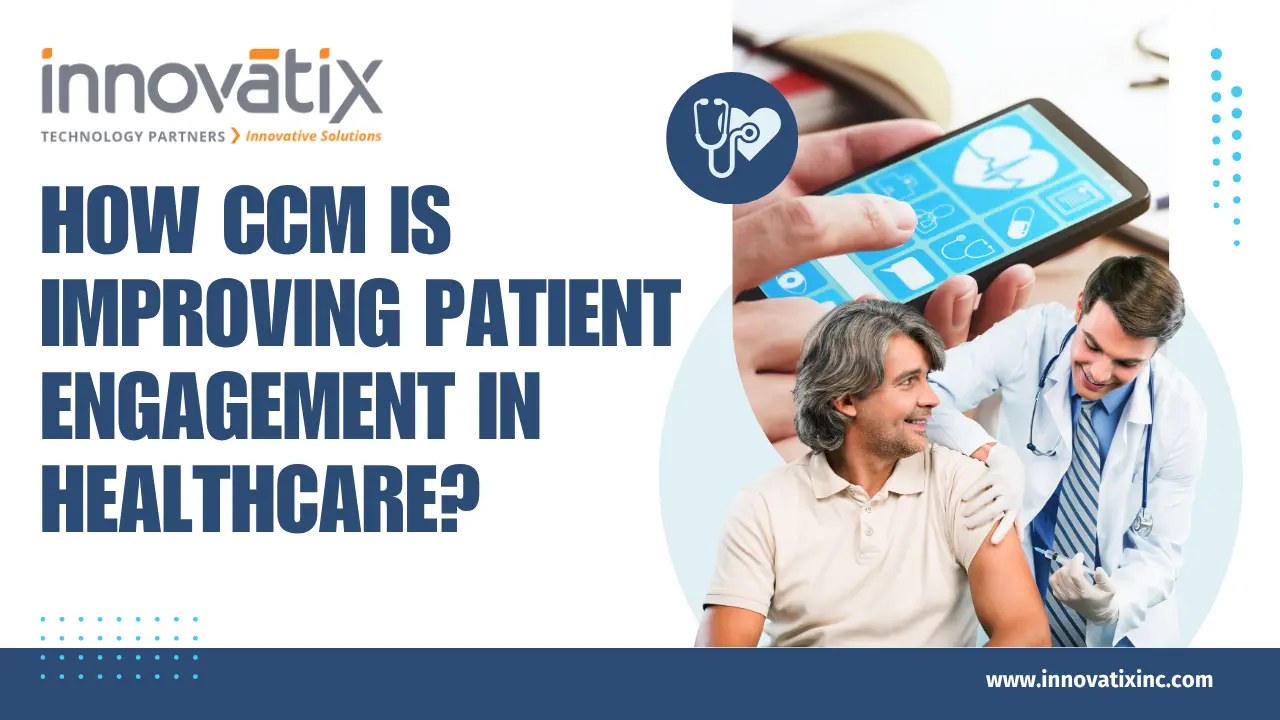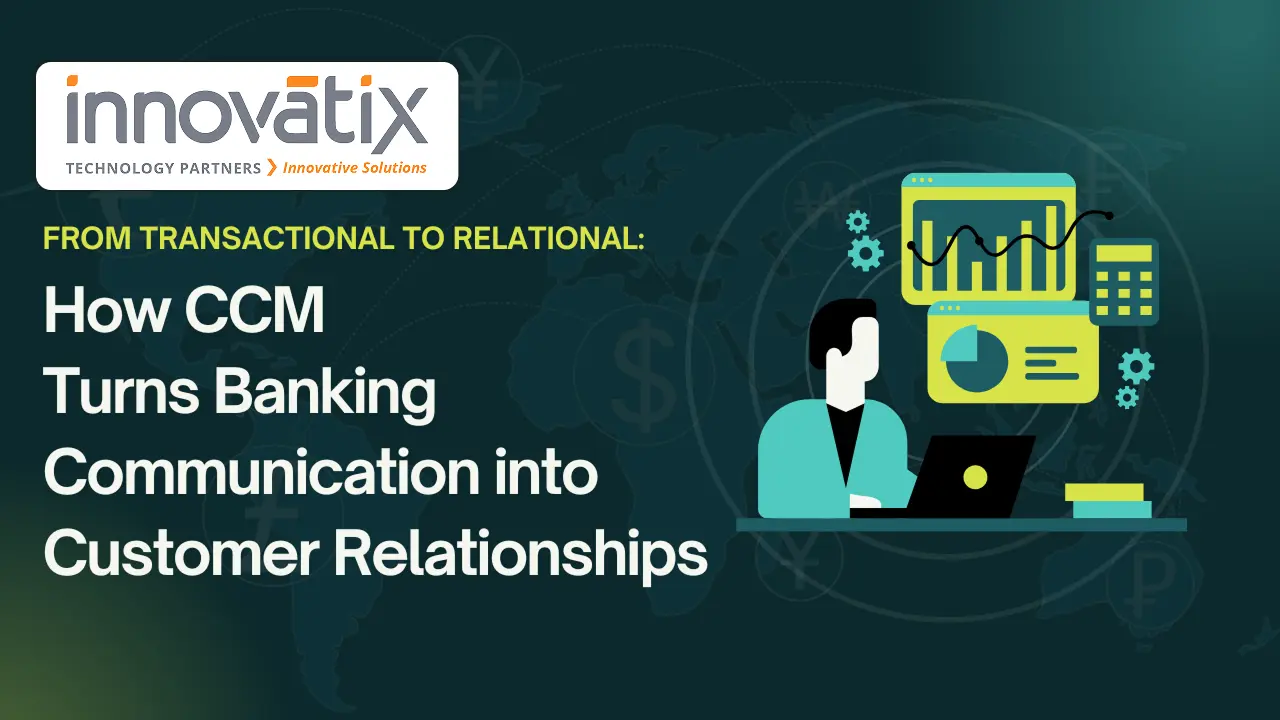Customer Communications Management (CCM) systems play a central role in how organizations interact with their customers. From invoices and policy documents to marketing messages and service alerts, CCM supports every stage of the customer journey. But as communication channels diversify and customer expectations rise, many businesses are discovering that their legacy CCM platforms—built for an era of print-centric, batch processing—can no longer keep up. These outdated systems often lack the flexibility, scalability, and integration capabilities needed to support personalized, real-time, and omnichannel interactions that modern customers expect. This has led organizations to reevaluate their CCM strategies and explore modern alternatives, such as Quadient. Purpose-built for today’s communication landscape, Quadient delivers a cloud-native, scalable solution with powerful personalization, seamless integration, and an intuitive interface that empowers business users while reducing IT dependency. In this blog, we’ll explore the key differences between traditional CCM systems and modern platforms, such as Quadient, and explain why making the switch is not just a technological upgrade—it’s a strategic advantage in the pursuit of stronger customer engagement, operational efficiency, and long-term growth. Understanding CCM: The Backbone of Customer Engagement Customer Communications Management (CCM) is the strategic discipline and technological framework that enables organizations to design, manage, and deliver outbound communications across a wide array of channels. These communications span a variety of formats—ranging from transactional documents like invoices, statements, and policy renewals to promotional content, service notifications, and onboarding materials. Whether delivered via print, email, SMS, web portals, or mobile apps, CCM ensures that messages are timely, relevant, and aligned with customer expectations. Traditional CCM systems were developed to support batch-driven, print-focused output—often requiring significant IT involvement and operating within rigid, siloed workflows. These traditional systems were well-suited for an era dominated by physical documents and predictable communication schedules. However, as consumer behavior and communication preferences have shifted, these legacy platforms have shown their limitations—particularly in terms of flexibility, speed, and multichannel capabilities. Modern CCM platforms, such as Quadient, are designed to meet the needs of a digital-first world. They support real-time, event-driven communication, empowering organizations to engage customers through their preferred channels with dynamic, personalized, and contextually aware content. These platforms combine cloud scalability, data integration, advanced personalization, and user-friendly design tools to deliver an agile, omnichannel experience—transforming CCM from a back-office process into a strategic enabler of customer engagement and brand loyalty. Quadient CCM Platform: A Closer Look Quadient is a global leader in Customer Communications Management (CCM), offering a robust, cloud-native platform that empowers organizations to deliver seamless, personalized, and secure communications across all customer touchpoints. Designed for today’s fast-paced, omnichannel environment, Quadient combines powerful technology with a user-centric approach to help businesses enhance customer engagement, streamline operations, and remain compliant in an increasingly complex regulatory landscape. Key capabilities of the Quadient CCM platform include: Whether you’re looking to modernize legacy systems or elevate your customer engagement strategy, Quadient provides a future-ready CCM solution that aligns with the evolving needs of both your business and your customers. Feature / Aspect Traditional CCM Systems Quadient & Modern CCM Platforms Deployment On-premises, hardware-dependent infrastructure Cloud-native or hybrid deployment for flexibility and scalability Channel Support Primarily supports print and email True omnichannel delivery: print, email, SMS, web, mobile, social media User Interface Complex, IT-dependent workflows Intuitive, no-code/low-code tools for business users Personalization Limited, rule-based static content Dynamic, data-driven, AI-enhanced personalization Scalability Constrained by hardware and legacy architecture Elastic scalability via modern cloud infrastructure Real-Time Communication Rare; mostly batch-driven processes Real-time and event-triggered communication capabilities Integration Siloed systems; difficult and expensive to integrate Seamless API and connector-based integration with enterprise systems Compliance & Security Basic controls; often requires third-party solutions Built-in advanced security, encryption, and compliance features Maintenance & Upgrades Manual updates; costly and time-consuming Continuous updates with minimal disruption Analytics & Reporting Limited or manual reporting Built-in analytics for actionable insights and optimization Why Modern CCM Platforms Like Quadient Outperform Legacy Systems In the age of digital acceleration and rising customer expectations, the shortcomings of legacy Customer Communications Management (CCM) systems have become too costly to ignore. Built in an era dominated by static, print-based workflows, these outdated platforms often lack the flexibility, speed, and intelligence required for modern customer engagement. Today’s businesses must do more than deliver information—they must foster meaningful, timely, and personalized interactions across every customer touchpoint. Modern CCM solutions, such as Quadient, are designed to meet these demands head-on. Here’s an in-depth look at why they consistently outperform legacy systems: 1. Omnichannel Communication is the New Norm Customers engage with brands through multiple channels, often shifting between print, email, SMS, mobile apps, and social media depending on convenience and urgency. Legacy CCM systems were developed in an era when print and email were the primary modes of communication, and they’ve struggled to adapt to the evolving multichannel landscape. Quadient is built for omnichannel delivery, ensuring consistent, coordinated communications across all platforms. Whether it’s a billing statement mailed, a policy update sent via email, or a promotional offer delivered as an in-app notification, Quadient helps organizations maintain brand consistency while enhancing the customer experience through personalized delivery at every touchpoint. 2. Enhanced Personalization Drives Customer Engagement Generic communications are easily ignored in a world where customers expect brands to “know them.” Traditional CCM systems typically use predefined templates and basic business rules, offering limited flexibility for true personalization. Quadient goes far beyond this. By leveraging real-time customer data, behavioral insights, and AI-driven logic, the platform can dynamically tailor content based on each customer’s profile, preferences, and actions. This results in communications that feel relevant, timely, and individualized—driving higher open rates, deeper engagement, and stronger brand loyalty. 3. Cloud-Native Architecture Offers Scalability and Agility Legacy platforms often require on-premises infrastructure, with resource-heavy deployments, rigid scaling limitations, and high ongoing maintenance costs. Upgrades can be disruptive and time-consuming, limiting the ability to innovate quickly. In contrast, Quadient’s cloud-native architecture enables elastic scalability that adapts to changing business needs—whether you’re onboarding thousands of new customers or launching a new line of services. Cloud deployment also reduces


